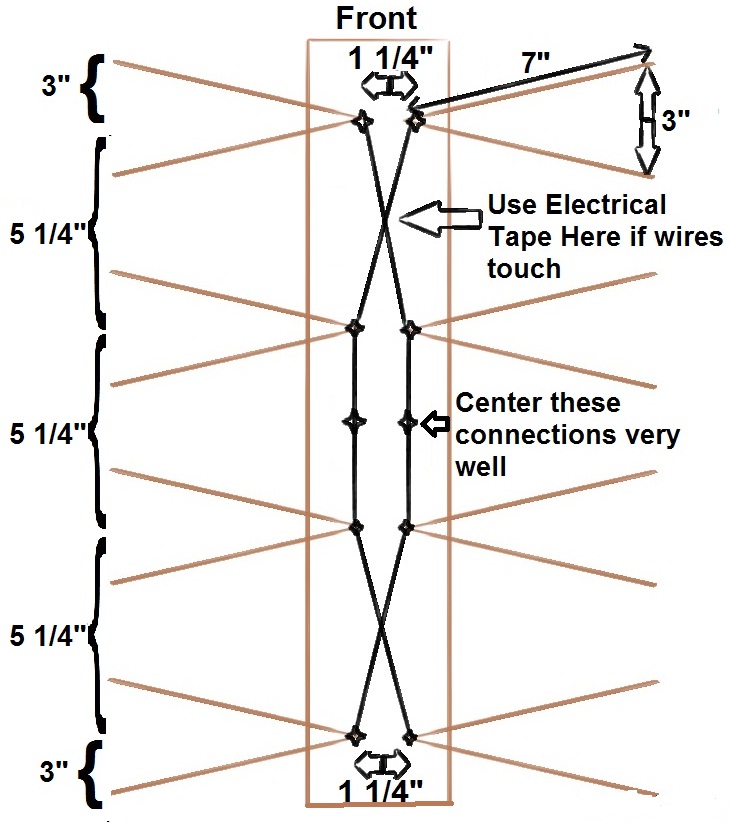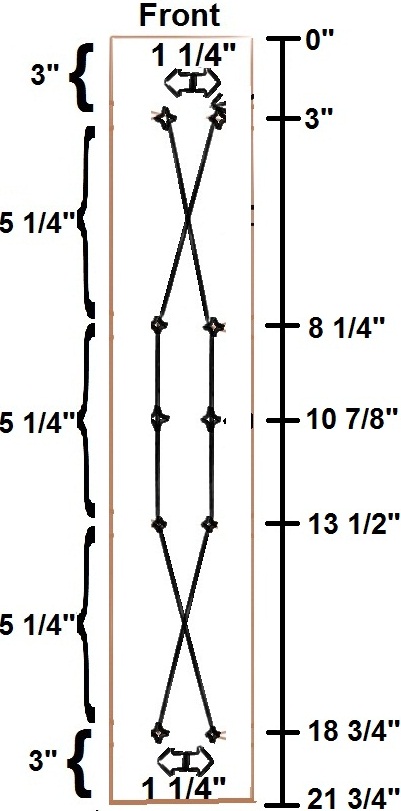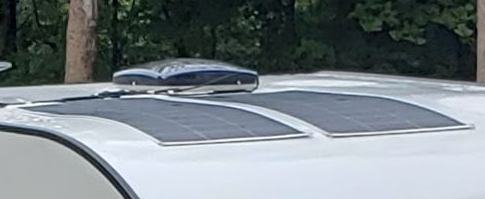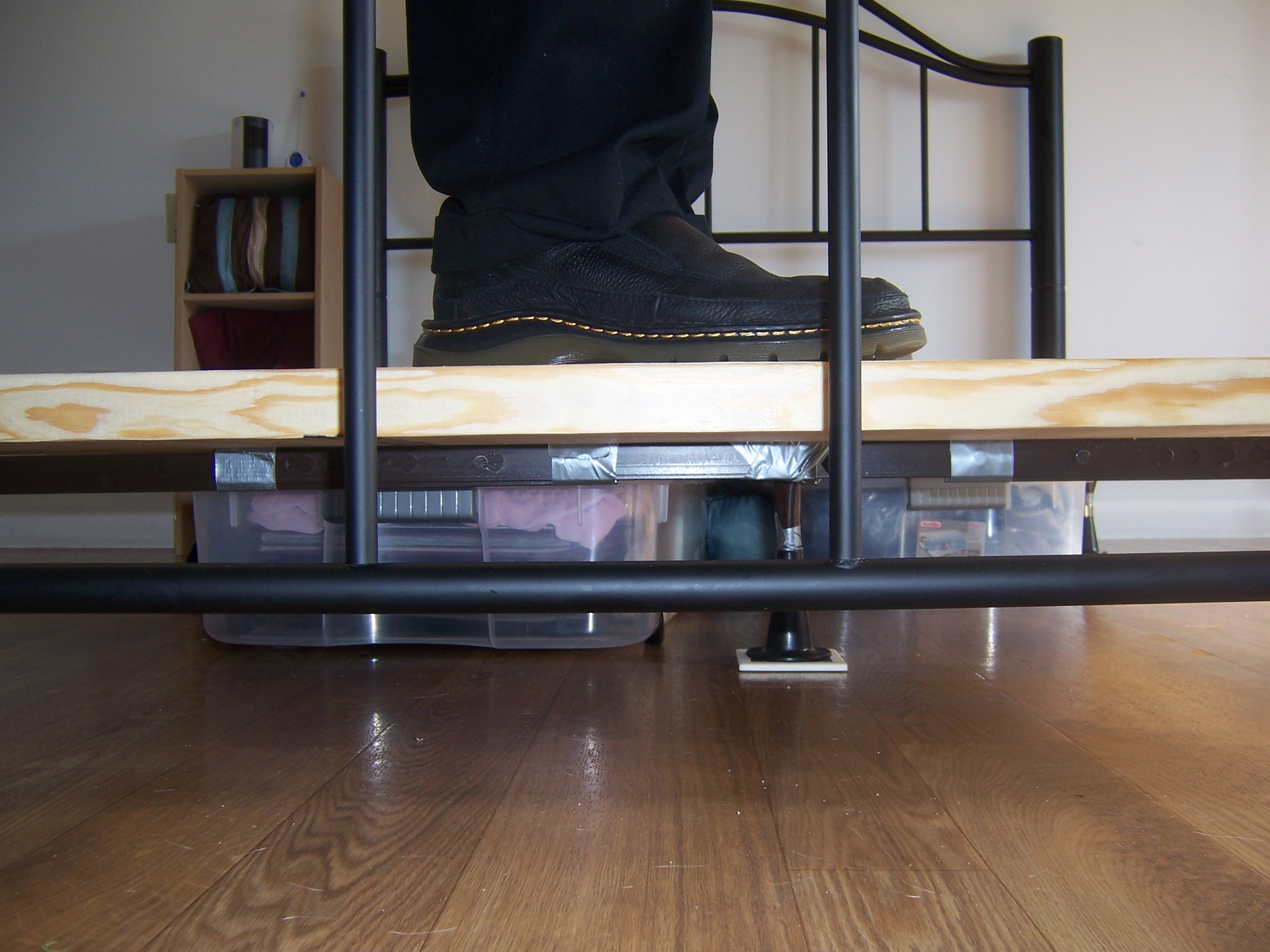 The DB4 Antenna. Simple, very cheap, and very effective. If you are within 30-40 miles of your TV stations, then this is the antenna for you. Before you do your build, check out the tools on this page to see how many stations you might get and how far away they are. There are similarly designed professionally made ones available to buy; DB8 Multidirectional HDTV Antenna
The DB4 Antenna. Simple, very cheap, and very effective. If you are within 30-40 miles of your TV stations, then this is the antenna for you. Before you do your build, check out the tools on this page to see how many stations you might get and how far away they are. There are similarly designed professionally made ones available to buy; DB8 Multidirectional HDTV Antenna and the DB4 Multi-Directional HDTV Antenna
. At the time of this writing they were not bad at $60 and $50, respectively. You could build the DB4 below with junk lying around your house or you could spend about $10 on all new materials for a strong and durable outdoor installation.
Looking for how to build a DB8 or DB16 Antenna based on these plans?
Materials
- 13′ 8 to 14 gauge Solid Copper Wire or ~5′ of Romex – Yes, you may use coat hangers
- Remove any insulation
- Cut eight 14″ Sections and two 19″ sections
- 22″ piece of 1×3 Wood or similar
- Look for dirt cheap scrap wood if on a budget
- 10 1” Screws
- 10 Regular or Lock Washers
- 1 Balun
(Available at Amazon($2.99 + FSSS), RadioShack, or your neighbors/parents garage)
Step by Step
Step 1: Paint the wood with an oil based sealer if you are mounting your antenna outdoors or if looks matter to you.
Step 2: Cut the wire into eight 14” strips and two 19″ strips and straighten them. A drill and pliers come in handy here if you want perfection(not necessary), watch the video.
Step 3: Form the whiskers using the eight 14″ strips. Bend the whiskers at the halfway point and leave 3” of space between the ends. From the bend to the end of each whisker should be 7″.
Step 4: Mark where the screws go (black dots) according to the diagrams on this page. Place two sets of marks centered on your wood 1 1/4” apart by running your tape measure lengthwise down the wood and marking at 3”, 8 1/4”, 10 7/8”, 13 1/2”, and 18 3/4”. Drill pilot holes.
Step 5: Put your screws with washers into the holes and tighten them until they have ~½” remaining.
Step 6: Put your whiskers into place
Step 7: Criss cross the 19″ lines into place bending as needed according to the picture at the top of the post. You’ll need to add some electrical tape to insulate the lines where they cross.
Step 8: Tighten the screws down to hold the whiskers and 19″ transmission lines in place.
Step 9: Make sure you’re bowties are still 3” apart and then plug in the antenna to your television!
Step 10: Test where you get the best reception. Location is everything, even a few inches can make a huge difference. Elevation also generally better, but keep in mind that attics cut about 40% of your signal. Many televisions have a signal strength meter that might help you find a good location.
- For More range – Add a reflector(Article coming soon, place the reflector 4 inches behind the bowties)







5 thoughts on “How to build a DB4 Antenna”
I made this yesterday, used coat hangers and scrap laying around. We now have all the channels in Tulsa area (aprox 60-70 miles away!) I am using an Rca antenna signal booster. Works great and took about an hour from start to finish . thank you.
Hey Allen, Just assembled one of these for my shop and it works great! (DB4 version) I now have access to 32 digital channels. I am located about 3 miles east of Tecumseh OK. Thanks for the great plans!
Beyond amazed what I’ve made has outperformed the ClearStream 4max, and others. I used 12 gauge bare copper, straightened out with drill and vice grip. Instead of wood I used white PVC board 3″ width, this is better in my opinion as wood can ground out your connections I’ve found. Each element I attached to 19″ lines with twisted copper speaker wire and brass washers to hold connection in place. I wanted to solder but I suck at that, I feel I made a good connection on each. I took mount off my ClearStream and mounted to back of that so I can add to mast in attic. 50 foot of rg6 goes to garage to channel master 4 port splitter/amplifier then off to my TVs. Very happy I did this. If you want to spend a tad bit more use copper and PVC board instead of wood, both together only costed me about 7.00.
I have found many items while part time scrapping. 3″ x 36″ vinyl pieces from fencing can be found quite often, as well as romex and thicker copper wire. My problem comes from understanding why it is so important to strip the wire since it should not harm the reception so long as the wire at the connection points are stripped. Ham radio enthusiasts build antennas all of the time with either stranded or solid wire, stripped or not. Are TV frequencies so picky? My clearstream 4 max is coated in plastic, so what gives?
Ray, you are quite correct that the insulation would not interfere much. The reason it is removed is to aid in the straightening process. When you put the copper in the drill and “wind” it a bit you get a slightly more stiff and very straight wire, which is very important for reception. The insulation would likely be ruined during this straightening process.